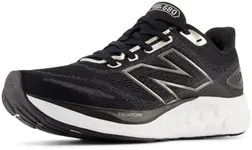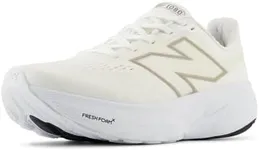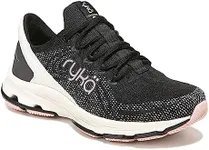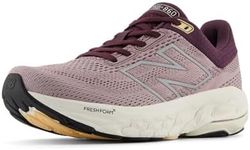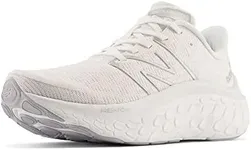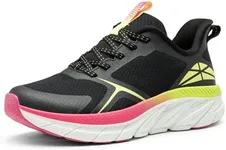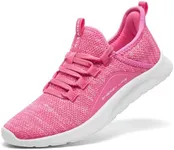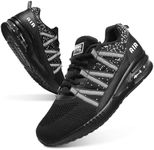Buying Guide for the Best Shoes For Plantar Fasciitis For Women
When choosing shoes for plantar fasciitis, it's crucial to focus on comfort, support, and fit. Plantar fasciitis is a condition that causes pain in the heel and bottom of the foot, so the right shoes can make a significant difference in managing this pain. The key is to look for shoes that provide excellent arch support, cushioning, and stability. Here are some key specifications to consider when selecting the best shoes for plantar fasciitis for women.Arch SupportArch support is crucial for individuals with plantar fasciitis because it helps distribute pressure evenly across the foot, reducing strain on the plantar fascia. Shoes with good arch support will have a noticeable curve in the midsole. For those with high arches, look for shoes with enhanced arch support to prevent the foot from flattening too much. For those with flat feet, moderate arch support can help maintain the natural shape of the foot. Choose shoes that match your arch type to provide the necessary support.
CushioningCushioning in shoes helps absorb shock and reduce the impact on the heel and forefoot, which is essential for managing plantar fasciitis pain. Shoes with ample cushioning in the heel and forefoot areas can provide relief by minimizing the stress on the plantar fascia. Look for shoes with soft, responsive materials like memory foam or gel inserts. If you experience severe pain, opt for shoes with extra cushioning. For mild discomfort, standard cushioning may suffice.
Heel SupportHeel support is important because it helps stabilize the foot and reduce excessive movement that can aggravate plantar fasciitis. A firm heel counter, which is the part of the shoe that wraps around the back of the heel, provides this support. Shoes with a sturdy heel counter will keep your heel in place and prevent it from rolling inward or outward. If you have a history of heel pain, prioritize shoes with reinforced heel support. For general comfort, a moderately firm heel counter should be adequate.
Fit and SizeProper fit and size are essential to ensure that the shoes provide the necessary support and comfort. Shoes that are too tight can cause additional pressure on the foot, while shoes that are too loose can lead to instability. When trying on shoes, make sure there is enough room in the toe box to wiggle your toes, and that the shoe fits snugly around the midfoot and heel. Consider trying on shoes at the end of the day when your feet are slightly swollen to get the most accurate fit. If you have wide feet, look for shoes that come in wider sizes.
StabilityStability in shoes helps control excessive foot motion, which can exacerbate plantar fasciitis symptoms. Stability shoes often feature a combination of arch support, firm heel counters, and supportive midsoles to keep the foot in a neutral position. If you have a tendency to overpronate (your foot rolls inward excessively), stability shoes can help correct this motion. For those with a neutral gait, standard stability features should be sufficient. Choose shoes that offer the right level of stability based on your walking or running pattern.
Material and BreathabilityThe material of the shoes can affect both comfort and breathability. Shoes made from breathable materials like mesh or knit fabrics allow for better air circulation, keeping your feet cool and dry. This is especially important if you wear the shoes for extended periods. Additionally, materials that offer some flexibility can provide a more comfortable fit. If you have sensitive skin or are prone to blisters, look for shoes with soft, seamless interiors. For everyday wear, prioritize shoes with breathable and flexible materials.


